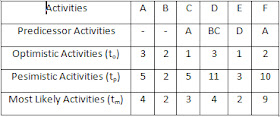Pure functional organization is traditional type of structure where total work of organization is divided into various functional department or units as per requirement for making easy management. The required departments are handled by functional managers. A project is assigned to functional department as a result all the project activities are performed under the control of functional manager in functional department. The project is also headed by concerned department manager and the manager can hire required specialist for project purpose.
| In this form of the project, a person is generally appointed as a project coordinator who acts as a staff manager to facilitate coordination of line management in functional department. S/he provides valuable information, supports and advices on the time to the concerned managers relating to the project. In this organization, better technical control is possible, specialist can be grouped to share knowledge and responsibilities and they are used for different project at the same time. |
Pure Functional Organization
Advantages of Pure Functional Organization:
- It provides maximum flexibility in use of existing staff.
- It develops expertise and specialization in human resources.
- It makes possible better supervision and control of the project.
- It facilitates the mass production.
- The functional department provides technical and other support for project success.
- Individual experts can be utilized by different projects.
You may also like this:


